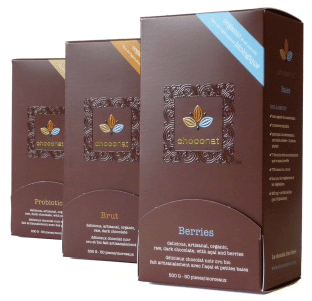If you've kept your eyes on nutrition news over the last few years, you couldn't have helped but see how many studies are coming out promoting the health value of dark chocolate. NOT milk chocolate mind you. But dark chocolate basically made up of: cacao beans; sugar; vanilla; and usually a touch of lecithin. As a summary of the latest research, MODERATE consumption of dark chocolate seems to:
* Support brain and heart health.
* Lower levels of unhealthy cholesterol.
* Lower high blood pressure.
* Increase energy and improve mood.
* Improve insulin sensitivity.
* Improve skin while protecting it from the sun.
* Act as a powerful antioxidant.
* Possibly help prevent stroke and support the liver.
* Lower levels of unhealthy cholesterol.
* Lower high blood pressure.
* Increase energy and improve mood.
* Improve insulin sensitivity.
* Improve skin while protecting it from the sun.
* Act as a powerful antioxidant.
* Possibly help prevent stroke and support the liver.

A lot of benefits from one of the world's favorite foods. But keep in mind that these benefits are compromised to the degree that the chocolate has unhealthy ingredients. So the less sugar, the better. And you'll want to avoid anything artificial in your chocolate. Ideally this means eating organic chocolate, since non-organic cacao is a heavily sprayed crop and the fat in cacao stores the toxins from sprays.
I highly encourage you to look for fair trade chocolate as well, because there is a great deal of slavery to this day in the chocolate world. (Coffee too.) Much of the world's chocolate is grown with some level of slave labor, including children.
But there are other factors to consider in your chocolate as well. What kind of cacao is used? There are grades of beans, and 95% of all chocolate uses the lowest grade, called forastero. These are robust and cheap to grow, but also flat in flavor. The top grade, Criollo, is the kind sought by connoisseurs of chocolate -- those looking for complex, lasting flavors.
Then, are the beans fresh? And how are they processed? A lot of people in the world of natural health will pay a premium for raw chocolate, made in small lots but processed to keep all the nutrients as nature intended.
One brand I recommend is called ChocoNat because it is one of the best raw chocolate experiences I've had; it uses freshly picked Criollo beans; it is organic and fair trade; and they plant 10 trees for every box sold. Given the fact that Criollo beans cost far more than forastero beans, I think ChocoNat is competitively priced in the raw chocolate arena.
Want to get your hands on some? You can click here to buy. (This is a referral link. This does not raise your costs.)
Now there are a few voices out there who say that chocolate is bad for you, and that raw chocolate is worse. They point to headaches that chocolate may give you for instance. I look, instead, to all the studies and note that raw chocolate does indeed seem to pack more punch. But to me this means that chocolate is powerful and raw chocolate is more powerful and needs to be respected.
It does improve blood vessels and blood flow over time, and if you toy with this, I'm sure it can give a headache to those who are sensitive. This just means really eating in moderation, and with ChocoNat, each piece is just 10 grams. I recommend 1 a day ... up to 3 if you wish. And you can feel good that you're satisfying your sweet tooth while providing the body with nutrients rather than empty calories!
I highly encourage you to look for fair trade chocolate as well, because there is a great deal of slavery to this day in the chocolate world. (Coffee too.) Much of the world's chocolate is grown with some level of slave labor, including children.
But there are other factors to consider in your chocolate as well. What kind of cacao is used? There are grades of beans, and 95% of all chocolate uses the lowest grade, called forastero. These are robust and cheap to grow, but also flat in flavor. The top grade, Criollo, is the kind sought by connoisseurs of chocolate -- those looking for complex, lasting flavors.
Then, are the beans fresh? And how are they processed? A lot of people in the world of natural health will pay a premium for raw chocolate, made in small lots but processed to keep all the nutrients as nature intended.
One brand I recommend is called ChocoNat because it is one of the best raw chocolate experiences I've had; it uses freshly picked Criollo beans; it is organic and fair trade; and they plant 10 trees for every box sold. Given the fact that Criollo beans cost far more than forastero beans, I think ChocoNat is competitively priced in the raw chocolate arena.
Want to get your hands on some? You can click here to buy. (This is a referral link. This does not raise your costs.)
Now there are a few voices out there who say that chocolate is bad for you, and that raw chocolate is worse. They point to headaches that chocolate may give you for instance. I look, instead, to all the studies and note that raw chocolate does indeed seem to pack more punch. But to me this means that chocolate is powerful and raw chocolate is more powerful and needs to be respected.
It does improve blood vessels and blood flow over time, and if you toy with this, I'm sure it can give a headache to those who are sensitive. This just means really eating in moderation, and with ChocoNat, each piece is just 10 grams. I recommend 1 a day ... up to 3 if you wish. And you can feel good that you're satisfying your sweet tooth while providing the body with nutrients rather than empty calories!
